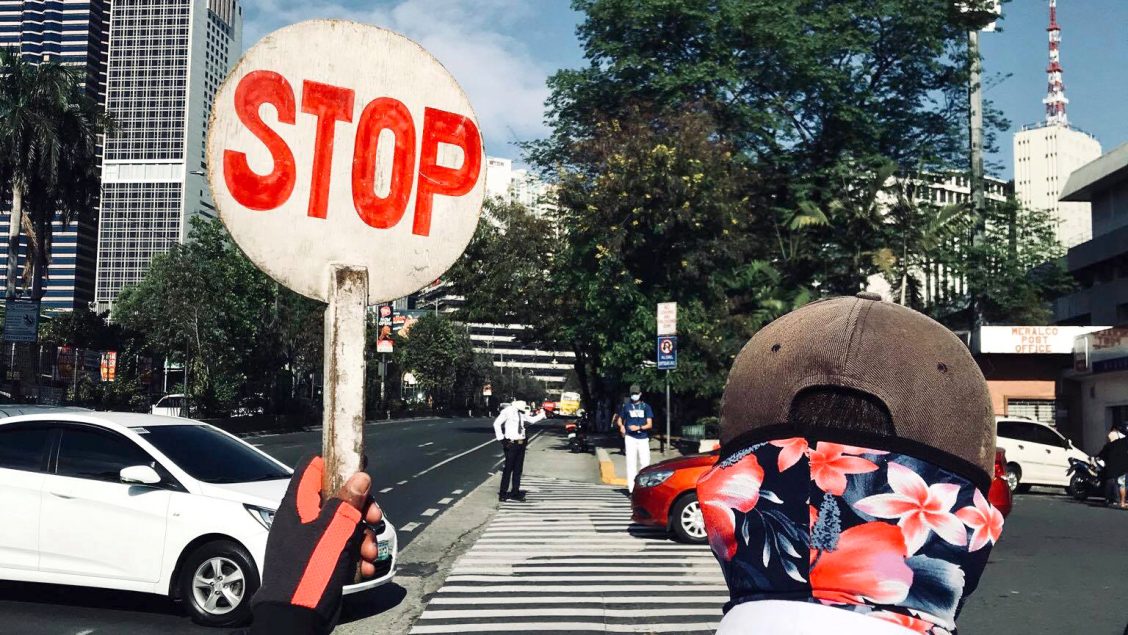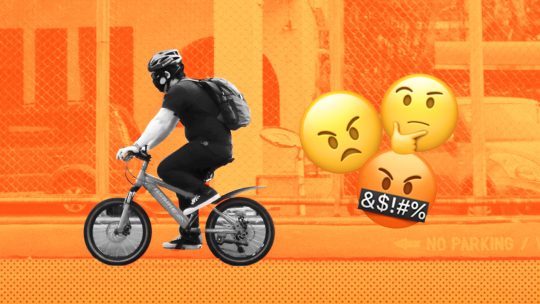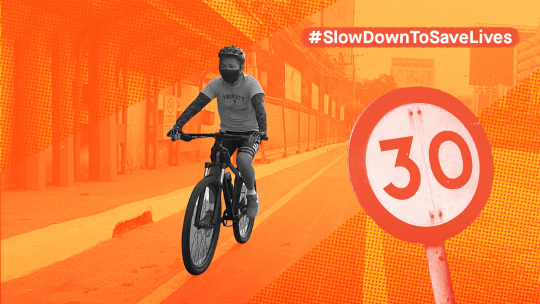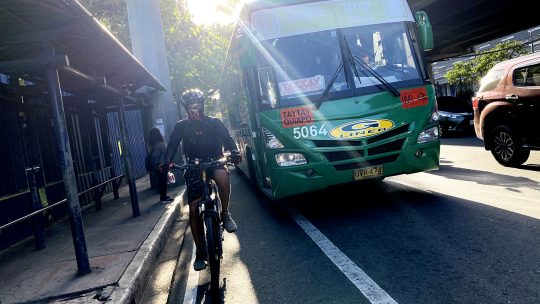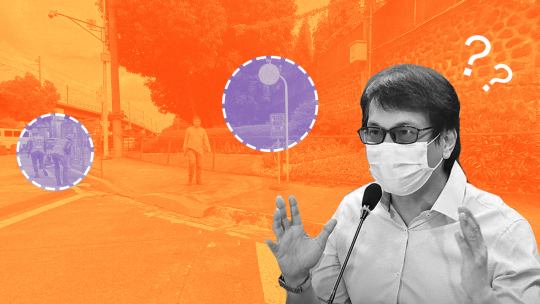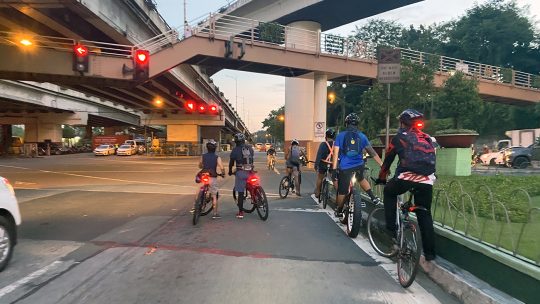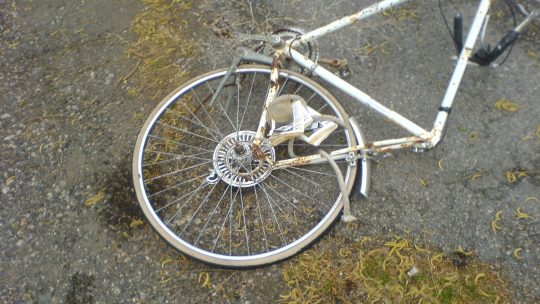This is our third local lockdown and there is still no end in sight. People have picked up a number of hobbies in order to stay sane in the wake of the global pandemic. The most prominent hobbies in some online circles being: fur parents, plantitas, crochet gurus, photographers, yogis, cycling advocates, musicians, amateur indoor designers just to name a few. While some of these are purely for recreation, COVID-19 has also turned the spotlight on personal health with some hobbies hitting two birds with one stone. After all, keeping ourselves healthy has become more important given the flaws in our health system and an inadequate pandemic response. What infrastructure is readily available to most of us?
There are nuances to cycling behavior in the pandemic. This is timely, given the new MMDA mandate against outdoor exercise within NCR. The mandate against exercise is consistent with popular misconceptions that overlook the importance of exercise during a pandemic, while also attaching negative ideas about fitness activities. There seems to be a tendency to consider cycling outdoors for fitness only as a minor, purely recreational activity. This ignores its merits as an easily integrated boon for community health that doubles as a greener, more accessible transport option for the average Filipino. Granted, a blanket ban may make for marginally easier enforcement, but is that the best decision if it also means foregoing one bad health outcome for another? This question becomes even more pointed when it is entirely possible for us to reap the benefits while mitigating the feared consequences of allowing people outdoors with proper guidelines and reasonable enforcement.
The problem is clearly the fact that our government seems to base its policies on everything else but science and data. Prior to this ECQ there was hardly any focus on restricting venues with bad air-flow. Indoor establishments such as air-conditioned restaurants, gyms, or shops with closed doors & windows and nary a single fan in sight were commonplace and still accepted as the norm throughout the past year. We’ve known the role of ventilation in viral transmission for more than a year. It’s since been established that social distancing, masking has low efficacy in closed, non-ventilated spaces. Meanwhile, the CDC greatly advises outdoor options as one of the safest, citing it as literally one of the preferred activities in stark contrast to dining at outdoor restaurants with friends from multiple households. We should make conclusions based on science and evidence-based thinking. How do we know that restricting outdoor exercise should be given this much focus by both the media and authorities? Is this based on data from our attempts at contact-tracing?
Exercise, especially outdoor, can’t be overlooked when we’re all trying to stay healthy. A good number of the PSA 2020 top 10 causes of morbidity and mortality in the Philippines can arguably be mitigated by considering outdoor exercise as essential activities. The risk of critical COVID is also higher if with these comorbidities according to the CDC. Risk factors commonly shared by lifestyle diseases are linked to sedentary habits and a norm of inactivity. The following are the biggest variables: smoking, unhealthy diet, physical inactivity and stress according to DOH, most, if not all of which can be mitigated with a promotion of active transport. Better access to regular exercise providing endorphins and healthy routines can also help with the unarguable psychological impact the pandemic has had on Filipinos moving forward. This can help with the isolation and stress due to challenges posed by COVID-19’s effect on our economy, well-being, and the well-being of our loved ones. The PSA noted a 57% suicide rate increase for the past year.
Another thing to consider is the nature of public transit in the Philippines with its overcrowding and unreliability due to a lack of funding, prioritization, and political will. Active mobility options now allow people, especially our current frontliners, safer, considerably more efficient options than forced exposure to badly ventilated, congested environments that increases risk for viral transmission and, more importantly, mutation. Variants have the potential to undermine the vaccine efforts of private and public entities alike and pose a threat to us all. None of us want to go back to square one.
How can we cycle more safely during this lockdown?
- Numbers – It’s better to cycle on your own but also let people know where you are going, with updates in key sections of your route. If you really need company, better to limit it to household members only or consider trying indoor options if you can.
- Wear a mask – Increased infectivity of the variants means increased vigilance and strict adherence to protocol, like maintaining proper distance while riding. Make sure no one is in your immediate vicinity before taking your mask off to drink.
- Avoid social interactions – Conversation and interaction with people outside of your household, even outdoors, can increase risk of viral transmission especially since variants are more infective.
- No unnecessary stopovers – While it’s important to stay hydrated during exercise, some stops are really needless especially indoor dining given what we know of the pandemic. Bring water and snacks and make sure to avoid crowds if you absolutely have to stop and rest.
We often punctuate interactions with other cyclists with “Ride safe!” and the irony shouldn’t be lost on all of us when it’s regularly riding that helps our bodies to do just that. The option to exercise in well-ventilated areas is one of the safest during the ongoing global pandemic. A community that promotes active lifestyles and enforces evidence-based policies is a community that is stronger and more resilient against disease. This is our third local lockdown and there is still no end in sight. The best thing to do is to just keep moving forward – outdoors.
About the Author
Ian is a licensed physician who often bikes to work frequenting clinics and ERs. He has since learned that cycling promotes health and greener choices, and that choosing to ride a bike serves to protest the great inequity of our roads and public spaces. #BetterbyBike

